-
 bitcoin
bitcoin $106680.127705 USD
0.67% -
 ethereum
ethereum $3615.722480 USD
-0.65% -
 tether
tether $0.999925 USD
-0.04% -
 xrp
xrp $2.550072 USD
5.91% -
 bnb
bnb $1002.572269 USD
-0.90% -
 solana
solana $168.746669 USD
1.08% -
 usd-coin
usd-coin $0.999832 USD
-0.03% -
 tron
tron $0.297244 USD
1.97% -
 dogecoin
dogecoin $0.182965 USD
0.71% -
 cardano
cardano $0.600432 USD
2.56% -
 hyperliquid
hyperliquid $41.439691 USD
-1.57% -
 chainlink
chainlink $16.548399 USD
2.40% -
 bitcoin-cash
bitcoin-cash $524.993680 USD
3.45% -
 stellar
stellar $0.302259 USD
4.10% -
 zcash
zcash $539.994871 USD
-16.31%
How long will it take for MACD to fall after the top divergence? How to predict the timing of the decline through the time period?
MACD typically falls within 1-3 weeks after top divergence, but timing can vary; use historical data and multiple timeframes for accurate predictions in crypto trading.
May 23, 2025 at 06:14 am
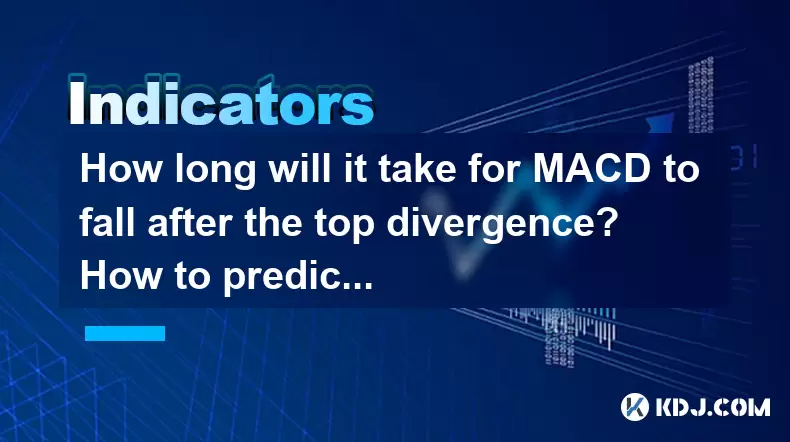
The Moving Average Convergence Divergence (MACD) is a popular technical indicator used by traders to identify trends and potential reversals in the cryptocurrency market. Understanding the timing of a MACD fall after a top divergence can be crucial for making informed trading decisions. This article will explore how long it typically takes for the MACD to fall after a top divergence and how to predict the timing of the decline through time period analysis.
What is MACD and Top Divergence?
MACD stands for Moving Average Convergence Divergence, a momentum indicator that shows the relationship between two moving averages of a cryptocurrency's price. It is calculated by subtracting the 26-period Exponential Moving Average (EMA) from the 12-period EMA. The result is then plotted against a 9-period EMA, known as the signal line. When the MACD line crosses above the signal line, it is considered a bullish signal, and when it crosses below, it is considered bearish.
Top divergence occurs when the price of a cryptocurrency reaches a new high while the MACD fails to reach a new high, indicating weakening momentum. This can be a sign that a reversal might be imminent. Top divergence is typically identified by drawing trend lines on both the price chart and the MACD chart. If the price trend line is sloping upwards while the MACD trend line is sloping downwards, a top divergence is confirmed.
How Long Does It Take for MACD to Fall After Top Divergence?
The duration it takes for the MACD to fall after a top divergence can vary significantly depending on market conditions, the specific cryptocurrency, and other technical factors. However, based on historical data and empirical observations, there are some general patterns that can be observed.
In many cases, the MACD begins to fall within 1 to 3 weeks after a top divergence is confirmed. This timeframe can be shorter in highly volatile markets or longer in more stable conditions. It is important to note that while top divergence can signal a potential reversal, it does not guarantee one. Other indicators and market analysis should be used in conjunction with MACD to increase the accuracy of predictions.
Predicting the Timing of the Decline Through Time Period Analysis
To predict the timing of the MACD decline after a top divergence, traders often use time period analysis. This involves studying the historical data of the specific cryptocurrency to identify patterns and cycles in the MACD's behavior.
- Identify the Time Period of the Divergence: Start by identifying the exact dates when the top divergence occurred. This can be done by drawing trend lines on the price and MACD charts and noting the dates when the divergence is confirmed.
- Analyze Historical Data: Look at previous instances of top divergence for the same cryptocurrency. Note how long it took for the MACD to fall after each divergence. This can help establish a baseline for the expected timeframe.
- Consider Market Conditions: Take into account the current market conditions. High volatility can lead to quicker declines, while stable markets might result in longer periods before the MACD falls.
- Use Additional Indicators: Combine MACD analysis with other indicators such as the Relative Strength Index (RSI) or Bollinger Bands to get a more comprehensive view of the market's momentum and potential reversal points.
Case Study: Bitcoin's Top Divergence and MACD Fall
To illustrate how the timing of a MACD fall can be predicted, let's look at a case study involving Bitcoin (BTC). In early 2021, Bitcoin experienced a top divergence where the price reached a new high while the MACD failed to do so.
- Date of Divergence: The top divergence was confirmed on February 21, 2021.
- Historical Data Analysis: Looking at previous top divergences in Bitcoin's history, it was found that the MACD typically fell within 1 to 2 weeks after the divergence.
- Market Conditions: At the time, the cryptocurrency market was highly volatile due to institutional interest and regulatory news.
- Additional Indicators: The RSI was also showing overbought conditions, further supporting the potential for a reversal.
In this case, the MACD began to fall approximately 10 days after the top divergence was confirmed, aligning with the historical data and market conditions.
Practical Steps to Monitor MACD and Predict Decline
To effectively monitor the MACD and predict its decline after a top divergence, traders can follow these practical steps:
- Set Up Your Charting Software: Use a reliable charting platform that supports MACD and other technical indicators. Ensure that the MACD is set to the standard 12, 26, 9 settings.
- Draw Trend Lines: Regularly draw trend lines on both the price and MACD charts to identify potential divergences. Use different colors to distinguish between bullish and bearish trends.
- Monitor the MACD Line and Signal Line: Keep a close eye on the MACD line and the signal line. A bearish crossover (MACD line crossing below the signal line) can confirm the start of a decline.
- Set Alerts: Many trading platforms allow you to set alerts for specific conditions, such as a MACD crossover or a price reaching a certain level. Use these to stay informed without constantly monitoring the charts.
- Review and Adjust: Continuously review your analysis and adjust your predictions based on new data and market conditions. Be flexible and ready to adapt to changing trends.
Using Multiple Timeframes for Enhanced Analysis
To increase the accuracy of your predictions, consider using multiple timeframes in your analysis. This can provide a more comprehensive view of the market's momentum and potential reversals.
- Short-term Timeframes: Use short-term charts (e.g., 1-hour or 4-hour) to identify immediate trends and potential entry or exit points.
- Medium-term Timeframes: Use medium-term charts (e.g., daily) to confirm trends and divergences identified on shorter timeframes.
- Long-term Timeframes: Use long-term charts (e.g., weekly or monthly) to understand the broader market context and long-term trends.
By analyzing the MACD and top divergence across different timeframes, you can gain a more nuanced understanding of the market and improve your predictions of when the MACD will fall.
Frequently Asked Questions
Q1: Can MACD be used effectively in all market conditions?A1: While MACD is a versatile indicator, its effectiveness can vary depending on market conditions. In highly volatile markets, MACD signals may be more frequent but less reliable due to rapid price movements. In stable markets, MACD can be more effective in identifying trends and reversals, but traders should always use it in conjunction with other indicators for the best results.
Q2: What other indicators can be used alongside MACD to predict a decline?A2: Several indicators can complement MACD in predicting a decline. The Relative Strength Index (RSI) can help identify overbought or oversold conditions, while Bollinger Bands can provide insights into volatility and potential breakouts. Additionally, volume indicators like the On-Balance Volume (OBV) can confirm the strength of a trend or reversal.
Q3: How can I avoid false signals when using MACD for trading?A3: To avoid false signals, consider the following strategies:
- Use Multiple Timeframes: Confirm signals across different timeframes to increase reliability.
- Combine with Other Indicators: Use additional indicators to validate MACD signals.
- Set Realistic Expectations: Understand that no indicator is perfect, and false signals can occur. Use risk management techniques like stop-loss orders to protect your investments.
A4: The choice of timeframe for MACD analysis depends on your trading style and goals. Short-term traders might prefer using 1-hour or 4-hour charts, while long-term investors may focus on daily or weekly charts. It's important to use the timeframe that aligns with your trading strategy and to analyze multiple timeframes for a more comprehensive view of the market.
Disclaimer:info@kdj.com
The information provided is not trading advice. kdj.com does not assume any responsibility for any investments made based on the information provided in this article. Cryptocurrencies are highly volatile and it is highly recommended that you invest with caution after thorough research!
If you believe that the content used on this website infringes your copyright, please contact us immediately (info@kdj.com) and we will delete it promptly.
- CRWV Shares Tumble Amid Data Center Delays and Weak Outlook
- 2025-11-11 21:15:01
- Price Prediction, EMAs, and Breakout Setups: Decoding SOON's Potential
- 2025-11-11 21:00:01
- IND vs SA: A Coin of Peace Featuring Gandhi and Mandela
- 2025-11-11 21:15:01
- Pi Network: Navigating Token Supply and the Slow Updates Dilemma
- 2025-11-11 21:40:01
- XRP's Wild Ride: Profit-Taking Meets Price Rebound – What's Next?
- 2025-11-11 21:50:00
- BlockDAG, Aptos, Crypto Confidence: Navigating the Builder Economy in 2025
- 2025-11-11 21:20:01
Related knowledge

What's the best way to learn the TRIX indicator?
Nov 10,2025 at 12:39pm
Understanding the Basics of the TRIX Indicator1. The TRIX (Triple Exponential Average) indicator is a momentum oscillator designed to filter out short...
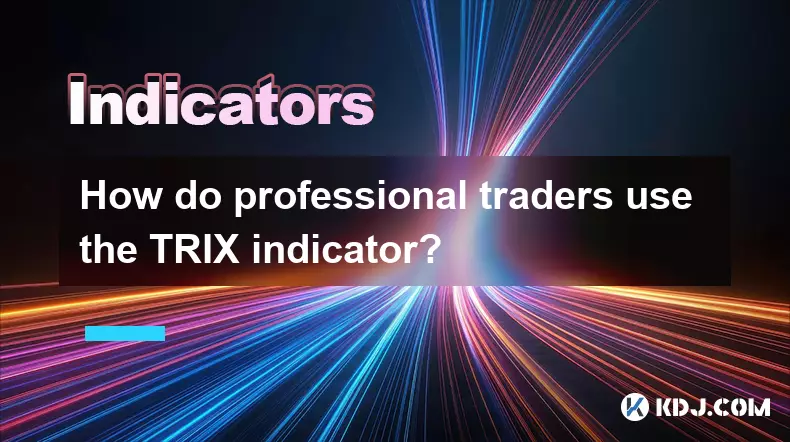
How do professional traders use the TRIX indicator?
Nov 06,2025 at 04:40pm
Understanding the TRIX Indicator in Crypto TradingThe TRIX (Triple Exponential Average) indicator is a momentum oscillator used by professional trader...
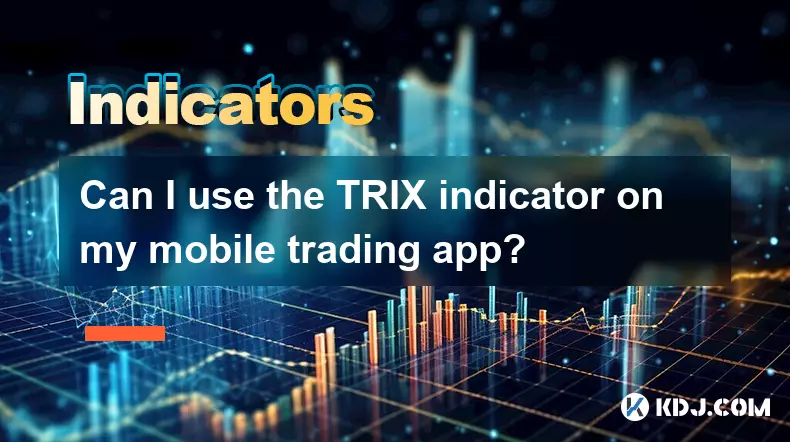
Can I use the TRIX indicator on my mobile trading app?
Nov 07,2025 at 07:40pm
The TRIX indicator, a momentum oscillator designed to filter out short-term fluctuations and highlight long-term trends, has become increasingly popul...
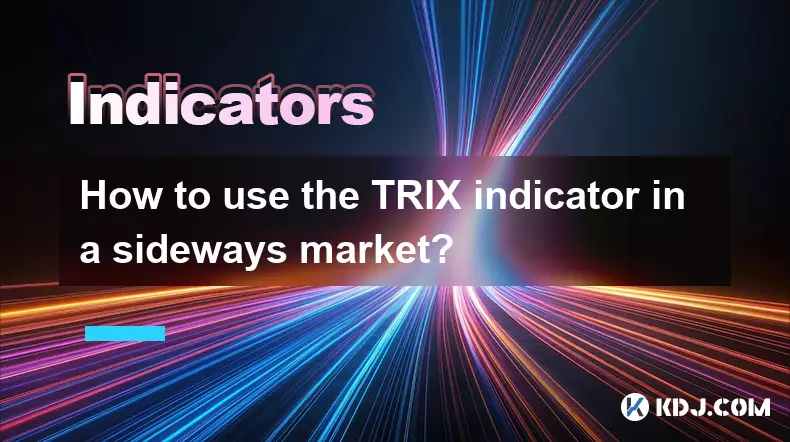
How to use the TRIX indicator in a sideways market?
Nov 10,2025 at 03:00pm
Bitcoin’s Role in Decentralized Finance Evolution1. Bitcoin remains the cornerstone of decentralized finance, serving as both a store of value and a b...
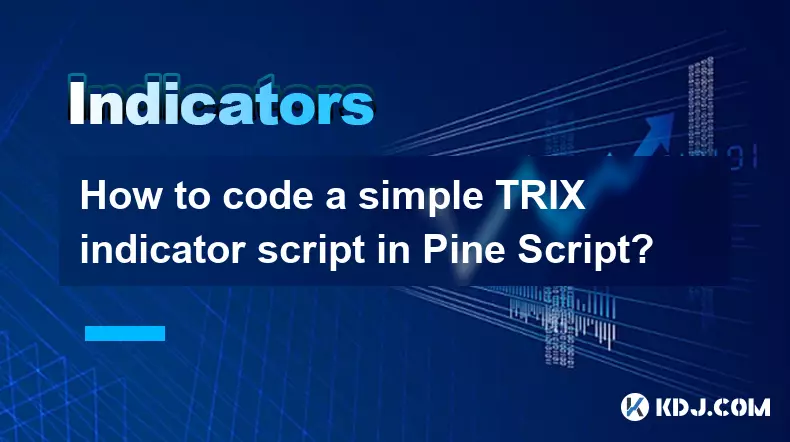
How to code a simple TRIX indicator script in Pine Script?
Nov 07,2025 at 06:20am
How to Code a Simple TRIX Indicator in Pine Script The TRIX (Triple Exponential Moving Average) indicator is widely used in cryptocurrency trading to ...
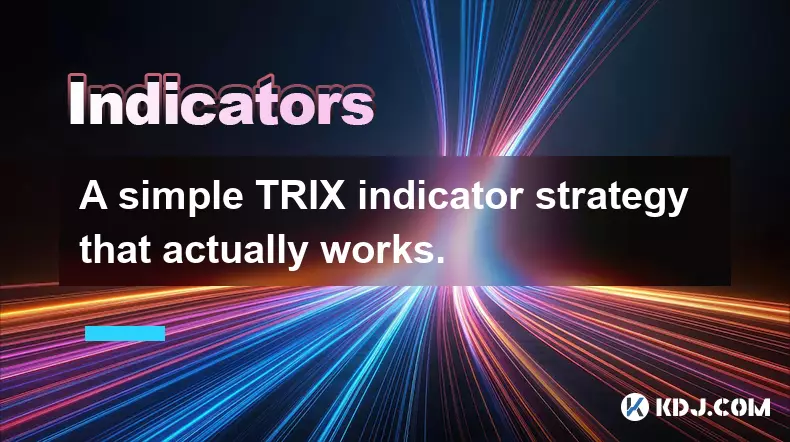
A simple TRIX indicator strategy that actually works.
Nov 08,2025 at 05:39pm
Understanding the TRIX Indicator in Crypto Trading1. The TRIX (Triple Exponential Average) indicator is a momentum oscillator designed to filter out s...

What's the best way to learn the TRIX indicator?
Nov 10,2025 at 12:39pm
Understanding the Basics of the TRIX Indicator1. The TRIX (Triple Exponential Average) indicator is a momentum oscillator designed to filter out short...

How do professional traders use the TRIX indicator?
Nov 06,2025 at 04:40pm
Understanding the TRIX Indicator in Crypto TradingThe TRIX (Triple Exponential Average) indicator is a momentum oscillator used by professional trader...

Can I use the TRIX indicator on my mobile trading app?
Nov 07,2025 at 07:40pm
The TRIX indicator, a momentum oscillator designed to filter out short-term fluctuations and highlight long-term trends, has become increasingly popul...

How to use the TRIX indicator in a sideways market?
Nov 10,2025 at 03:00pm
Bitcoin’s Role in Decentralized Finance Evolution1. Bitcoin remains the cornerstone of decentralized finance, serving as both a store of value and a b...

How to code a simple TRIX indicator script in Pine Script?
Nov 07,2025 at 06:20am
How to Code a Simple TRIX Indicator in Pine Script The TRIX (Triple Exponential Moving Average) indicator is widely used in cryptocurrency trading to ...

A simple TRIX indicator strategy that actually works.
Nov 08,2025 at 05:39pm
Understanding the TRIX Indicator in Crypto Trading1. The TRIX (Triple Exponential Average) indicator is a momentum oscillator designed to filter out s...
See all articles









































































